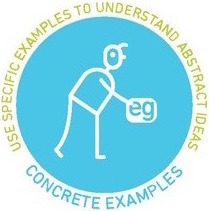49 Teaching Study Strategies
Effective study strategies are central to academic success, yet many students rely on inefficient methods like rereading or highlighting. Drawing on insights from Make It Stick: The Science of Successful Learning by Peter C. Brown, Henry L. Roediger III, and Mark A. McDaniel, this section explores evidence-based strategies for effective learning and ways instructors can instill better study habits in their students.
Research in cognitive science has identified strategies that promote durable and transferable learning. These methods often challenge students to engage more deeply with material but lead to greater retention and understanding over time.
The Science of Learning: Key Principles
Retrieval Practice
|
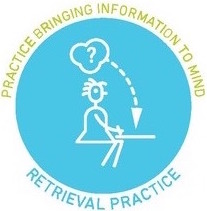 |
Spaced Practice
|
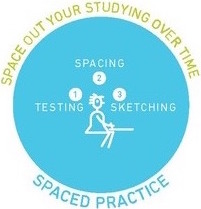 |
Interleaved Practice
|
 |
Elaboration
|
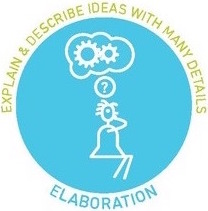 |
Dual Coding
|
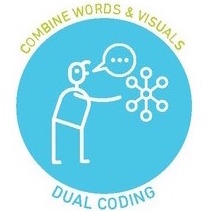 |
Concrete Examples
|
How Instructors Can Support Better Study Habits
Foster Awareness of Effective Strategies
- Teach the Science of Learning
- Introduce students to the principles of retrieval, spacing, and interleaving. Use examples to show how these strategies work in practice.
- Example: Share stories or research findings from Make It Stick to illustrate why these methods outperform highlighting or rereading.
- Model Good Habits
- Demonstrate effective strategies during class. For example, incorporate retrieval practice with frequent low-stakes quizzes or review questions.
- Use spaced repetition in your teaching plan, revisiting key concepts over weeks or months.
- Encourage Reflection
- Ask students to think about their study approaches and identify what is or isn’t working.
- Example: Provide a survey or prompt: “Which study strategies are you using? How effective do they feel, and why?”
Design Assignments That Reinforce Learning Principles
- Incorporate Retrieval Practice
- Design assignments or quizzes that require students to recall information rather than recognize it.
- Example: Use open-ended questions instead of multiple-choice to encourage deeper thinking.
- Space Out Assessments
- Schedule exams, quizzes, and projects throughout the term to encourage regular study habits.
- Example: Use cumulative assessments that revisit earlier material.
- Assign Generative Tasks
- Ask students to attempt problems or generate hypotheses before providing direct instruction.
- Example: Pose a challenging question at the start of class to spark curiosity and set the stage for learning.
Provide Resources and Scaffolding
- Offer Study Guides with Prompts
- Provide scaffolds like concept maps, guiding questions, or practice problems that emphasize active engagement.
- Example: “Create a diagram that explains how photosynthesis works, using the terms provided.”
- Create Opportunities for Peer Learning
- Facilitate study groups or peer-teaching sessions where students can practice retrieval and elaboration collaboratively.
- Example: Assign students to explain a concept to their peers during group work.
- Use Technology to Reinforce Habits
Addressing Common Misconceptions
Many students believe that rereading, highlighting, and cramming are effective strategies because they provide a sense of familiarity. Help students understand these pitfalls:
- Highlighting feels productive but often leads to shallow processing.
- Instead, encourage annotation or summarization of key ideas in their own words.
- Cramming produces short-term gains but poor long-term retention.
- Teach the benefits of spacing and retrieval through small, repeated assessments.
Framing Metacognition as a Tool for Lifelong Learning
Integrating study strategies into course design not only improves academic performance but also equips students with tools for self-directed learning. As Make It Stick emphasizes, the struggle and effort involved in effective learning techniques are what make them work. By teaching students to plan, monitor, and evaluate their learning, instructors empower them to become resilient, reflective learners capable of meeting challenges in academia and beyond.
High-Impact Tips from ETSU Instructors
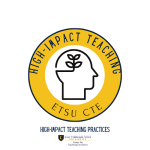 I usually direct my students to the Feynman technique and Pomodoro method.
I usually direct my students to the Feynman technique and Pomodoro method.
I recommend a couple of modifications if you are new to having to structure your time and tasks in this way:
- Customize your time blocks as needed. If you are really struggling for focus and find yourself staring into space at the 10 minute mark, take your break then and then come back and try to get to 12-15-20-25 minutes as you build up stamina.
- If you are really engaged with a topic skip 1 break and continue – but take your break at the 50 minute mark
Each session should have a specific and quantifiable goal (e.g. I want to be able to answer these specific questions versus I am going to review my notes). You should be able to identify whether you met your goal or need more time with your goal.
Clear your distractions:
- Don’t have your phone out – if using it as a timer then set the alarm and put it out of site.
- Use website blockers such as Leechblock, Block Site, or Mindful Browsing if studying on a device to block social media access.
- Don’t study with the TV on or any access to social media. Those are things to do during your break.
I also usually run a first-day activity for all of my students on study strategies and techniques as a small group discussion.
Action Plan for Success – In Person (Stephen Rice ETSU)
Stephen Rice | Health Sciences
Sources and Attribution
Primary Source
This section is informed by and adapted from:
- The Learning Scientists. Study Strategies and Cognitive Science for Learning.
- Available at: The Learning Scientists Website
- Brown, P. C., Roediger, H. L. III, & McDaniel, M. A. (2014). Make it stick: The science of successful learning. The Belknap Press of Harvard University Press.
For a full list of references and additional resources, please follow the link above.
Use of AI in Section Development
This section was developed using a combination of existing research, expert-informed insights, and AI-assisted drafting. ChatGPT (OpenAI) was used to:
- Summarize key evidence-based study strategies (such as retrieval practice, spacing, and elaboration) into a structured and accessible guide for students and educators.
- Clarify best practices for applying cognitive science principles to learning and retention.
- Enhance readability and coherence, ensuring that strategies for effective studying are both research-supported and practically applicable.
While AI-assisted drafting provided a structured foundation, all final content was reviewed, refined, and contextualized to ensure accuracy, pedagogical effectiveness, and alignment with cited sources. This section remains grounded in research-based learning practices and respects Creative Commons licensing where applicable.
Media Attributions
- rpimage-asset (9)
- spimage-asset (9)
- Interleaving+Circle (1)
- elabimage-asset (9)
- dcimage-asset (9)
- ceimage-asset (9)
- CTE Badges (6)
